Similarities in the Fashion Between Argentina and Us
The traditional dress in Latin America is so much more than just a costume.
It provides a link to the region'due south history, as well as a portrayal of each countries' national identity. Furthermore, about of Latin American countries shares cultural Spanish (or Portuguese, in the example of Brazil), Ethnic, and African influences due to their shared history of pre-Columbian America, colonisation and the trans-Atlantic slave merchandise. With that existence said, in this article, we will observe how Argentina, Brazil and Panamá accept each evolved through history into their very own distinct characters, by focusing on their unique traditional clothes.
Argentina
Traditional clothes in Argentina is very much connected to the nation'southward socio-historical narrative and folklore; the land, dance, and music.
At that place are diverse types of traditional attire within Argentina, such as those related to Tango and Chacarera. However, due to the transient nature of this article, I have decided to focus on the Gaucho figure.
The Gaucho emerged in Argentina back in the 17th Century, later the Spaniards introduced the equus caballus to the New World. It is one of the most iconic costumes of Argentine folklore and a national symbol of pride, in both its male and female person versions.
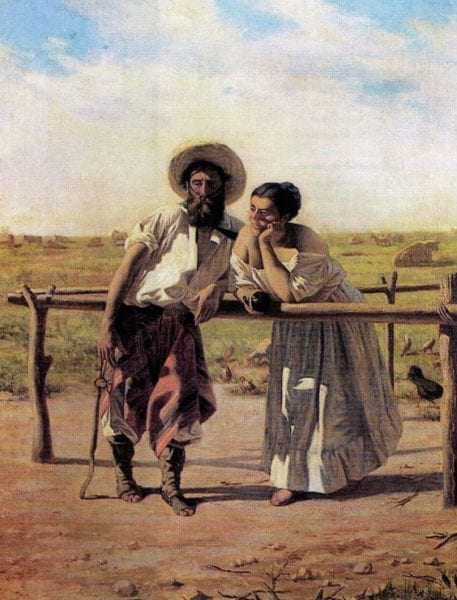
The use of the term "gaucho" dates back to colonial times, and at that place are several theories surrounding its origins. Some say the give-and-take "gaucho" comes from the discussion "hauchu" in the Quecha language, which ways orphan or vagabond. Whereas in that location are besides claims that the discussion "gaucho" derives from the Arabic give-and-take, "chaouch", which means herder of animals.
In any case, the Gaucho is understood to be a blazon of semi-nomadic cowboy from the plains and areas near Argentina, likewise as some regions of Uruguay, Paraguay, the Bolivian Chaco, and southern Brazil.
What to See When You Visit Argentina
The classic Argentine male gaucho costume combines a pair of black trousers with a white shirt and, higher up it, an open up short sleeve jacket. These garments form the basis of the "gaucho-look", which also includes a series of fundamental accessories that are required in order for the ensemble to be considered truly "gaucho". The centrepiece accessory is a scarlet handkerchief tied with a knot to the front end of the neck. Other important features include a brown sash and boots, which always go above the "bombachas", which are loose-fitted cotton fiber pants. Finally, this costume also includes a kind of characteristic reddish beret or brimmed chapeau.
During the wintertime months, the Gaucho volition wear a poncho; a garment typically fabricated of thick wool, often designed with different colours and patterns such every bit stripes, with an opening in the centre for the head. In its origins, the poncho was used by Indians, mestizos, whites, gauchos, etc. and is still used throughout Latin America today.
Equally for the females, they may be referred to as "prc" (this term derived from Quechua, pregnant girl or female person), "paisana", "gaucha" and "prenda". However "paisana" is probably the almost pop choice in gimmicky Argentine republic.
Traditionally, the paisana had the part of accompanying the gaucho and, therefore, her traditional dress is characterized by its simplicity.
The paisana's attire consists of a long brim worn without a petticoat, along with a kind of long-sleeved sweater that goes up to the neck. On her anxiety, the paisana wears "alpargatas", the Castilian word for espadrilles, equally a symbol of her honesty. And finally, the traditional hairstyle are two braids that fall to both sides of the shoulders.
Fashion Insiders in Buenos Aires
Brazil
Brazil is the 5th biggest state in the world, and certainly the largest in Latin America. Each region boasts it's very own civilization within the country's already impressive melting-pot cultural backdrop. And so, there is plain going to exist more i traditional costume that encapsulates Brazilian culture, such as Samba and Amazonas.
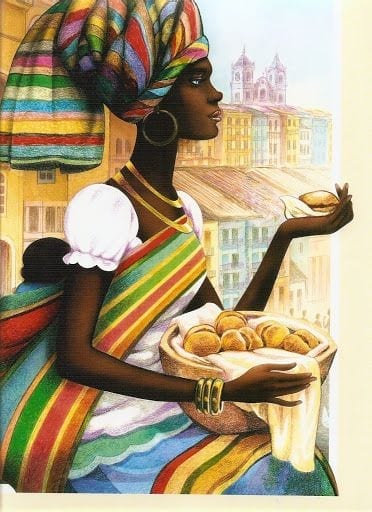
For the purpose of this article, I have chosen to focus the female figure of "Baiana de Acaraje" of Salvador de Bahia, a region well-known for embracing its strong African heritage through its wild carnival and soul food. The "Baiana de acaraje", or merely "Baiana" is the name given to the women that dedicate themselves to the traditional occupation of selling acarajé, a dish made from peeled beans formed into a ball then deep-fried in palm-oil.
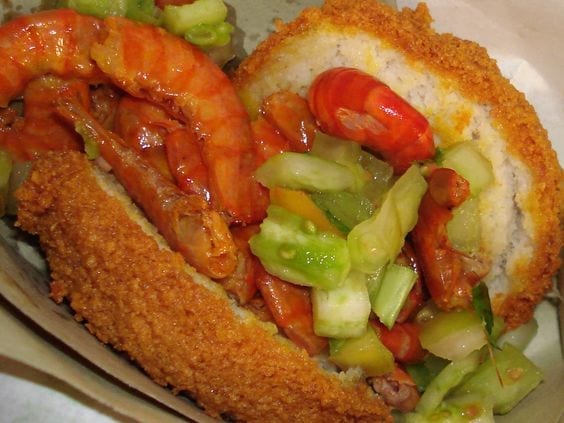
The "baiana" wearing apparel is a alloy of ancient European Baroque style; white lace details and multiple layers. She wears a long, wide brim or "saia" that she combines white blouses that are embroidered by hand.
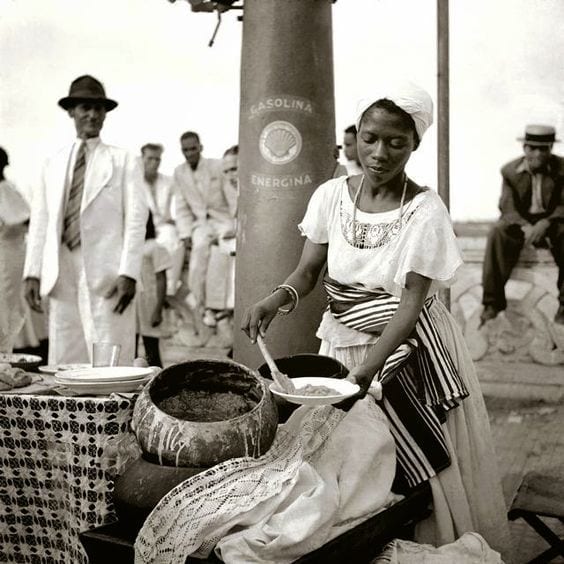
Below the flowing brim, she wears "calçolão" which are white cotton pants. Equally for accessories, the "baiana" wears a "singuê", a kind of shawl that is worn as a bodice, "pano da costa" which is a cloth often fabricated of muslin, which is then rolled on the head and worn as a turban. She also dons vibrant, long beaded necklaces and big earrings of unlike designs. All in all, the outfit is reminiscent of not but African Indian tribes only besides expresses the regions Afro-Islamic roots.
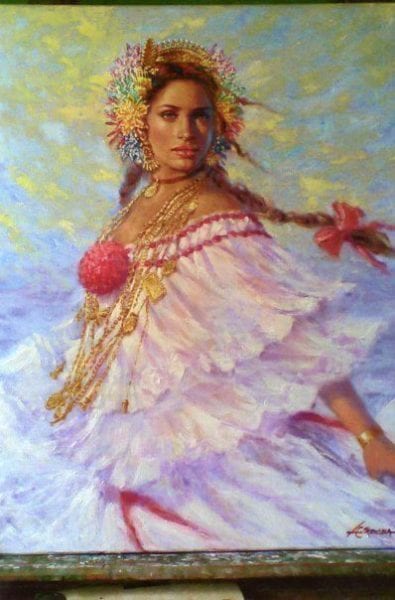
WITH VAMOS ACADEMY Yous CAN:
LEARN Castilian IN MADRID
Larn SPANISH IN MEXICO Urban center
Learn SPANISH IN SANTIAGO DE Republic of chile
LEARN Spanish IN LIMA Peru
LEARN SPANISH IN VALENCIA
Larn SPANISH IN BARCELONA
Acquire Spanish IN TORONTO
LEARN Spanish IN ARGENTINA
LEARN SPANISH IN MENDOZA
Panamá
The "Pollera" is the name given to the Panamanian traditional dress. It literally means"a big one-piece skirt." Used mostly in traditional festivities and sociology throughout Spanish-speaking Latin America. It'south made using different materials such as cotton and wool and is commonly decorated with colourful pompoms and embroidery of flowers and regional animals.
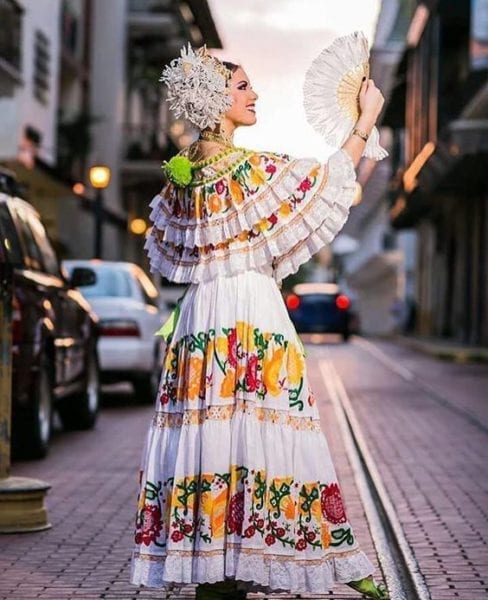
The polleras are a course of Spanish colonial dress that were made sometime between the 16th and 17th centuries by craftsmen in the indigenous populations of the Andes.
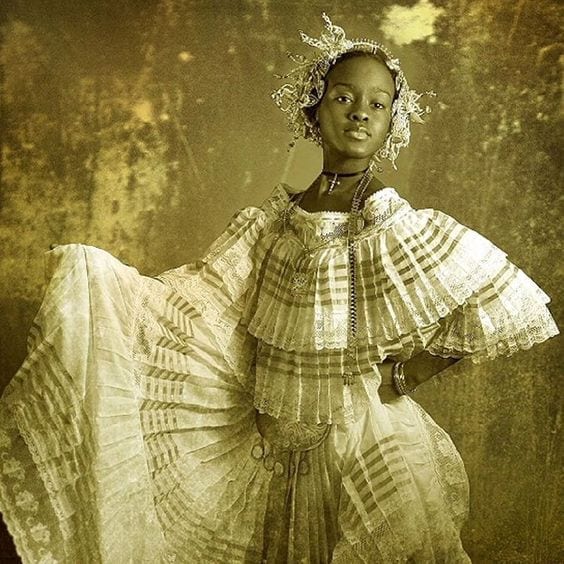
In Panama, handmade polleras are used during festivals or celebrations. Girls and women would more often than not accept two skirts during their lifetime: one before age 16 and the other into adulthood. A single skirt tin can toll anywhere from several hundred to several thousand dollars and take up to a twelvemonth to create. The gold and pearl chaplet and tembleques provided by a brim are generally passed downwardly every bit heritages throughout the generations.
Profesor de Ingles Gratis Castilian Classes
Join the conversation on social:
We take new events and updates every week! Do your Spanish, learn nearly Buenos Aires, or prepare for your trip to Due south America by browsing our web log.
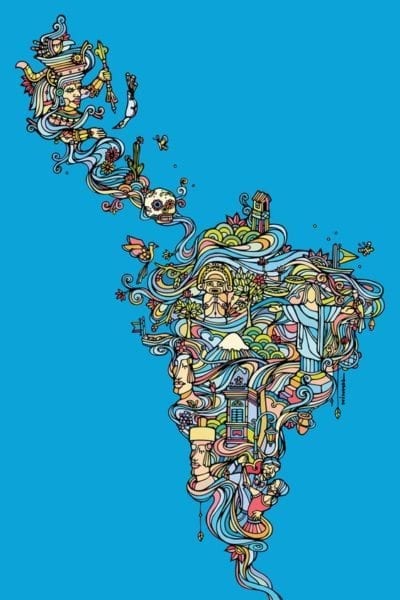
0 Response to "Similarities in the Fashion Between Argentina and Us"
Post a Comment